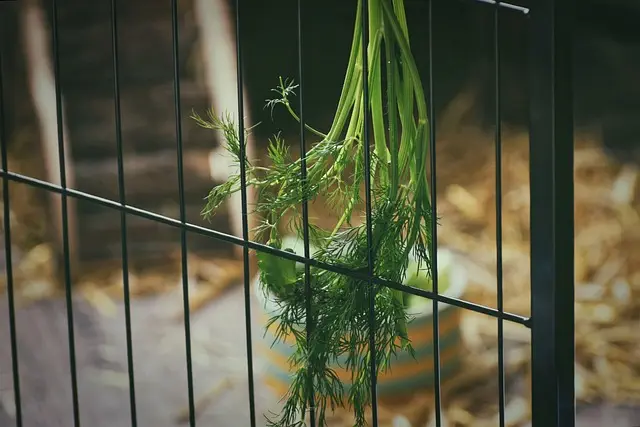Athletes considering kratom for performance enhancement should be aware that this Southeast Asian evergreen tree's active alkaloids, mitragynine and 7-hydroxymitragynine, may contribute to heightened mental clarity and focus. Growing kratom (Mitragyna speciosa) at home allows for a controlled environment with consistent conditions to ensure potency and purity. This self-sufficiency is advantageous for athletes aiming to integrate kratom naturally into their training regimen, potentially augmenting their cognitive performance. Understanding how to grow a kratom plant is essential for those who want to avoid external dependencies and maintain a steady intake of the natural remedy. It's important to note that while initial studies suggest kratom could aid in focused attention and swift decision-making during training, athletes must consult healthcare professionals before incorporating it into their routine due to individual health considerations and to ensure compliance with sports regulations. The cultivation of kratom for athletic purposes should be approached with a scientific mindset, balancing the benefits of natural supplements with professional guidance and careful monitoring of effects.
Embarking on the quest for peak performance, athletes often seek natural methods to enhance mental clarity and focus. This article delves into the potential of kratom, a botanical substance, to bolster cognitive function and athletic prowess. We explore the scientific rationale behind its effects, offer guidance on cultivating your own kratom plant with our step-by-step guide “How to Grow a Kratom Plant,” and discuss how athletes can effectively integrate kratom into their training regimens for heightened concentration and performance optimization. Join us as we unravel the multifaceted role of kratom in the world of sports and wellness.
- Unlocking Peak Performance: Mental Clarity and Focus for Athletes Through Kratom Use
- The Science Behind Kratom's Effect on Cognitive Function and Athletic Performance
- Cultivating Your Own Kratom: A Step-by-Step Guide to How to Grow a Kratom Plant
- Integrating Kratom into Training Regimens: Best Practices for Athletes Seeking Enhanced Focus
Unlocking Peak Performance: Mental Clarity and Focus for Athletes Through Kratom Use

Athletes are constantly seeking ways to enhance their performance, and one natural supplement that has gained attention in athletic circles is kratom. Kratom, a tropical evergreen tree native to Southeast Asia, contains compounds called alkaloids that have been reported to influence mental clarity and focus. When consumed responsibly, kratom can potentially unlock peak performance by promoting a state of heightened concentration and cognition. For those interested in exploring this natural remedy, understanding how to grow a kratom plant offers a unique advantage. Cultivating kratom at home ensures a consistent and controlled supply, as well as the ability to manage the plant’s growing conditions optimally for potency and purity. This self-sufficiency can be particularly beneficial for athletes who require a reliable source of their performance enhancement supplement. Moreover, the mental acuity attributed to kratom use may assist athletes in maintaining focus during training sessions and competitions, potentially leading to improved reaction times and better decision-making under pressure. As with any supplement, it is crucial for athletes to consult with healthcare professionals and adhere to guidelines that govern its use within their sport for both safety and compliance purposes. The potential of kratom as a tool for mental clarity and focus in athletic performance remains an area of interest and ongoing research, with many athletes turning to the cultivation and responsible use of this plant as part of their holistic training regimen.
The Science Behind Kratom's Effect on Cognitive Function and Athletic Performance

Kratom, a tropical evergreen tree native to Southeast Asia, has garnered attention within athletic communities for its potential cognitive-enhancing properties. The effects of kratom on mental clarity and focus are rooted in its active alkaloids, mitragynine and 7-hydroxymitragynine, which interact with the brain’s opioid receptors. These interactions can modulate neurotransmitter systems such as dopamine and norepinephrine, contributing to improved focus and concentration, which are crucial for athletes seeking to enhance their performance.
Research into kratom’s effects on cognitive function is ongoing, with studies examining its potential benefits in a controlled setting. While the science is still evolving, preliminary findings suggest that kratom may aid in mental tasks requiring sustained attention and rapid decision-making—skills that are vital for athletes during training and competition. Additionally, understanding how to grow a kratom plant can be advantageous for those interested in sourcing the product naturally, as it allows for control over the cultivation process, ensuring consistency and quality of the alkaloid content. This knowledge can empower athletes to manage their intake more effectively, potentially leading to optimized performance outcomes. As with any supplement, it is essential for athletes to consult with healthcare professionals before incorporating kratom into their regimen to ensure safety and appropriateness for their individual needs and circumstances.
Cultivating Your Own Kratom: A Step-by-Step Guide to How to Grow a Kratom Plant

Cultivating your own Kratom (Mitragyna speciosa) plant can be a rewarding experience for athletes seeking natural methods to enhance mental clarity and focus. Growing Kratom requires careful attention to its specific environmental needs, as it thrives in conditions that mimic its native habitat in Southeast Asia. To initiate the cultivation process, select a healthy Kratom seed or sapling from a reputable supplier. Ensure the chosen location receives dappled sunlight for about 6 hours a day, as direct sunlight for extended periods can scorch the leaves.
Kratom plants prefer well-draining soil rich in organic matter. Amend your soil with compost and aged manure to provide the necessary nutrients. Regular watering is crucial, but be mindful not to overwater, as Kratom plants are susceptible to root rot in soggy conditions. Consistent moisture levels maintain leaf health, which is essential for harvesting mature leaves that contain the desired alkaloids. Monitor your plant closely for signs of stress or disease, as these factors can impact the potency and effectiveness of the Kratom leaves. With patience and attentive care, your home-grown Kratom plant can become a natural addition to your wellness routine, potentially enhancing mental clarity and focus for athletic performance.
Integrating Kratom into Training Regimens: Best Practices for Athletes Seeking Enhanced Focus

Athletes in pursuit of mental clarity and heightened focus often explore various natural supplements, with kratom being a prominent option due to its alkaloid profile. Kratom, derived from the leaves of Mitragyna speciosa, can influence cognitive function and mood, potentially enhancing performance during training. To integrate kratom into an athlete’s training regimen effectively and responsibly, it is crucial to understand both the potential benefits and the nuances of its use.
Before considering incorporating kratom into your routine, prioritize a comprehensive understanding of local laws and regulations regarding its use, as well as consulting with healthcare professionals. Proper dosage tailored to individual sensitivity and tolerance is paramount; starting with a low dose and observing effects over time is recommended. Additionally, athletes should consider the conditions under which kratom plants are cultivated when exploring how to grow a kratom plant, as soil quality, climate, and care can affect alkaloid concentrations, thereby influencing the potency of the harvested leaves. Regular monitoring of both physical performance and mental acuity is essential to gauge the effectiveness of kratom in your training regimen. It’s also important to maintain a balanced diet and stay hydrated, as these factors can impact overall well-being and focus. By approaching kratom use with a scientific mindset, athletes can potentially reap its benefits while minimizing risks and optimizing their performance.
Incorporating kratom into an athlete’s regimen can potentially sharpen mental clarity and focus, as outlined in “Unlocking Peak Performance: Mental Clarity and Focus for Athletes Through Kratom Use.” The scientific examination in “The Science Behind Kratom’s Effect on Cognitive Function and Athletic Performance” reveals promising insights into kratom’s influence. For those interested in harnessing this natural resource, our guide on “Cultivating Your Own Kratom: A Step-by-Step Guide to How to Grow a Kratom Plant” offers practical advice for a sustainable and controlled supply. By adhering to the best practices detailed in “Integrating Kratom into Training Regimens: Best Practices for Athletes Seeking Enhanced Focus,” athletes can optimize their mental acuity, contributing to overall performance enhancement. It’s clear that with careful consideration and responsible use, kratom may serve as a valuable tool in the athletic arena, provided its cultivation and intake align with an athlete’s individual needs and the regulatory framework governing its use.






